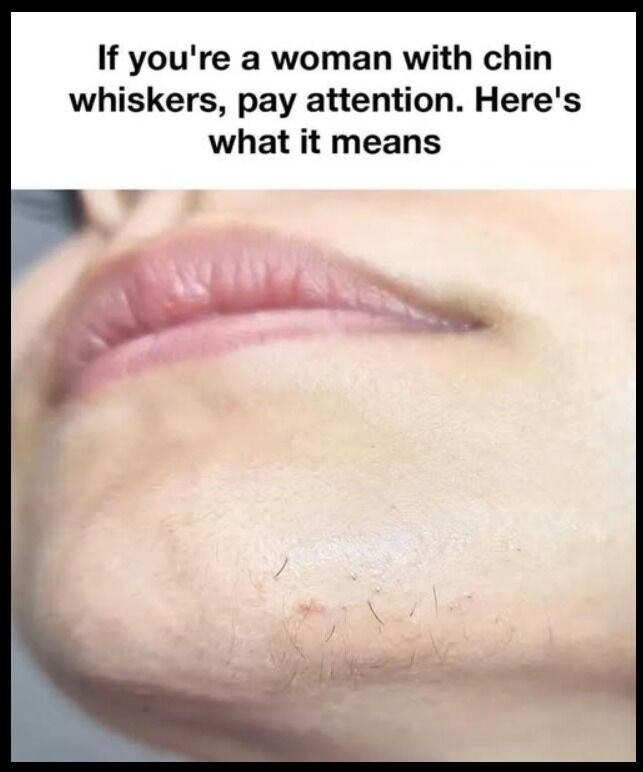Facial hair—especially those few stubborn strands on the chin—is something almost everyone encounters at some point. Men often expect it; women sometimes don’t. But regardless of gender, chin hair follows the same biological rules: a precise growth cycle and a hormonal system that determines how visible, coarse, or persistent those hairs become. While a single rogue hair may feel unusual, there’s real science behind why it appears, why it returns, and why some people see more of it than others.
At the core is the hair growth cycle, which governs every hair on your body. Every strand—on the head, arms, or chin—passes through three stages, though the duration of each stage and hormonal influence vary.
The first and most critical phase is anagen, the active growth stage. During anagen, the follicle is fully connected to its blood supply, receiving nutrients, oxygen, and hormones that drive growth. The length of this phase depends on genetics and location: hair that stays in anagen longer grows longer and thicker, which is why head hair can reach your waist while chin hair rarely grows past a certain length.
Next comes catagen, a short transitional phase lasting two to three weeks. The follicle shrinks and disconnects from the blood supply, halting growth. The hair becomes a “club hair”—still attached and visible, but no longer nourished, waiting to be shed.
Finally, the follicle enters telogen, the resting phase, lasting a few months before shedding the old hair. A new anagen phase then begins, pushing fresh hair to the surface. This cycle explains why plucked chin hairs return—sometimes seemingly thicker, though the diameter hasn’t actually changed. The blunt regrowth makes them more noticeable.
Hormones, especially androgens, largely determine whether chin hair is faint or coarse, dark, and persistent. Androgens, including testosterone, exist in both men and women—men just produce more. These hormones signal certain follicles to produce thicker, darker hair, which is why facial hair develops during male puberty.
Women also have androgens, but in lower amounts. Elevated levels or increased follicle sensitivity can trigger chin hair, a condition called hirsutism. It often appears as coarse hair on the chin, upper lip, chest, or abdomen and can result from hormonal shifts during puberty, pregnancy, or menopause, or from conditions like Polycystic Ovary Syndrome (PCOS), adrenal disorders, or thyroid issues. Sometimes, no medical cause exists; genetics alone can dictate the pattern of facial hair.
As estrogen declines with age—especially after menopause—its balancing effect on androgens weakens, allowing dormant follicles to activate. That’s why many women notice a few wiry chin hairs for the first time in their fifties or sixties. Aging also affects follicle response: some shrink, stopping production, while others react more strongly to androgens, producing thicker hair where it’s least wanted.
Understanding the interplay between hair cycles and hormones clarifies why chin hair behaves as it does. A hair that keeps returning in the same spot indicates a healthy follicle following normal anagen–catagen–telogen rotations. Hormonal influence may make it thicker, darker, or more visible than other hairs.
For those bothered by chin hair, several removal methods exist. Tweezing is quick, cheap, and effective. Waxing removes multiple hairs but may irritate skin. Threading is precise and chemical-free. Longer-term solutions include laser hair removal, which reduces growth but isn’t permanent for everyone, and electrolysis, the only FDA-approved permanent method, though it requires time and consistency.
If chin hair appears suddenly, grows rapidly, or comes with irregular periods, acne, or weight changes, consulting a healthcare professional is advised. Excess androgen production can indicate underlying hormonal or metabolic issues that may need attention—not because chin hair itself is dangerous, but because the imbalance behind it may be significant.
In short, chin hair is normal and biologically complex. It results from a continuous hair cycle influenced by genetics, hormones, and time. Whether it appears consistently or sporadically, it’s simply a natural expression of the body’s systems.
Removing it, embracing it, or ignoring it is a personal choice—but the science behind it remains the same.
